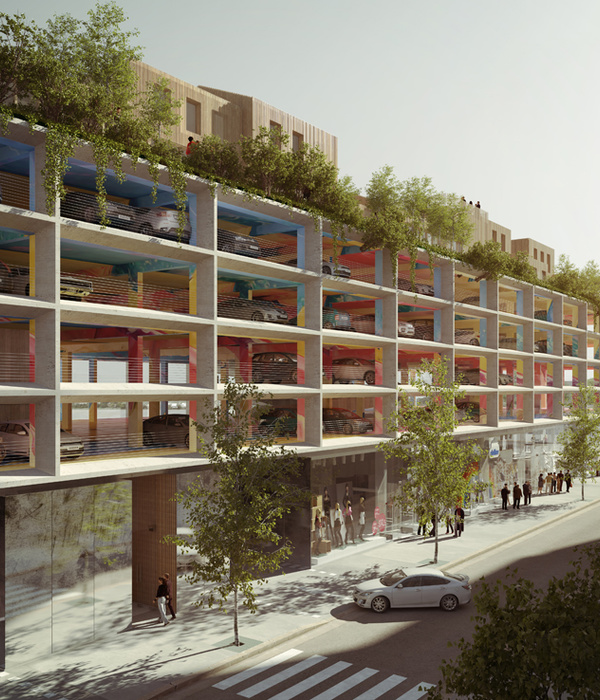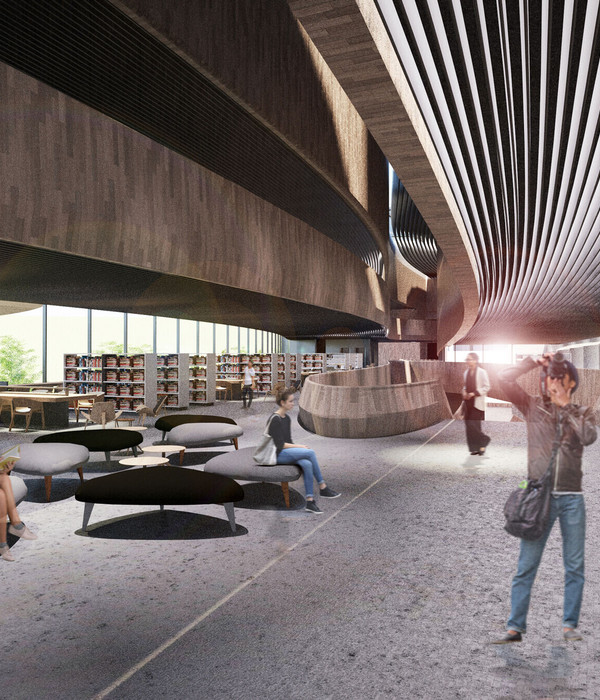Architect:Playze switzerland ltd Shanghai Institute of Architectural
Location:Ningbo, China
Project Year:2014
Category:Exhibition Centres City Halls Cultural Centres
Playze and Schmidhuber have won the invited competition to design the Urban Planning Exhibition Center in Ningbo, China.
Prompted by surging urban growth in many of the nation’s larger cities, the Chinese “Urban Planning Museums” are generally intended to communicate important city planning and development issues to the public. The Ningbo Urban Planning Exhibition Center interprets this concept by way of a forum-like design in which discussions between politicians, professionals and the public may take place. In the new Center, the lines between citizens and decision-makers are blurred; visitors are given rare access to the inner-workings of their city. Our goal has foremost been to create an engaging, accessible public space in the new district, and thereby strengthen both physical and social ties between the local government and community.
Urban Concept The Exhibition center anchors the urban district of Ningbo Eastern New City: a fresh suburban swath of equal parts high-rise and high-way, still searching for its own identity. Urbanistically speaking, the new Planning Exhibition Center aims to bring intimacy to these wild new spaces. The building’s faceted perimeter blends horizontally into it’s context, reacting and sometimes mirroring existing site conditions. The four large entrances lead to a lobby space and multi-story atrium. A circular loop passage brings visitors to and from a public roof-terrace, where they bear first witness to the very issues being debated and exhibited below. The loop’s different coves and mounds invite visitors to interact with the building both during the day and at night.
Spatial Concept The Chinese ribbon dance (Cai Dai Wu Dao) dates back to the Han Dynasty. A professional ribbon dancer can animate complex figures like wandering dragons in a single movement. Originally performed only for royalty, it emerged as an important medium for communication between different social classes.
Inspired by this ancient artform, the building program, structure and envelope are woven together as a ribbon. Beginning at ground level, the ribbon wraps around the program; it defines volume and circulation-space. It guides visitors through the building, controls light, opens to views of the surroundings. The ribbon links program elements into a fluid sequence of space—a deliberate break from more conventional, static, “white box” museums. Instead, the spaces present no clear physical boundaries—they are blended together. This blending merges the visitor’s awareness of the architecture, the exhibitions, the different people and social classes into a contiguous, flowing experience.
Façade Concept The City of Ningbo has a rich history in ceramic production. It was here that the so-called Ceramic Road began, and the city played an important role in the national and international trade of ceramics throughout the civilization’s history. That said, the use of ceramics is not simply an homage to the local traditions of Ningbo; the building’s textured glazed-ceramics also create ephemeral reflections of surrounding cityscape. These reflections animate the facade with varying intensity depending on time of day, season, weather, etc. From a distance, the building is like a beacon, an attractor. With its form and reflective qualities, the façade modulates visually with its context. Up close, this modulation is also applied in the deployment of the facade system and details. The ceramic screen gradually shifts between being nearly transparent to fully opaque, according to program needs and views to the surroundings; while around exhibition areas the tiles overlap tightly, they open up in gathering areas to allow ample daylight and scenic views. At night, the pattern glows as shadows populate the facade’s curved apertures.
▼项目更多图片
{{item.text_origin}}












